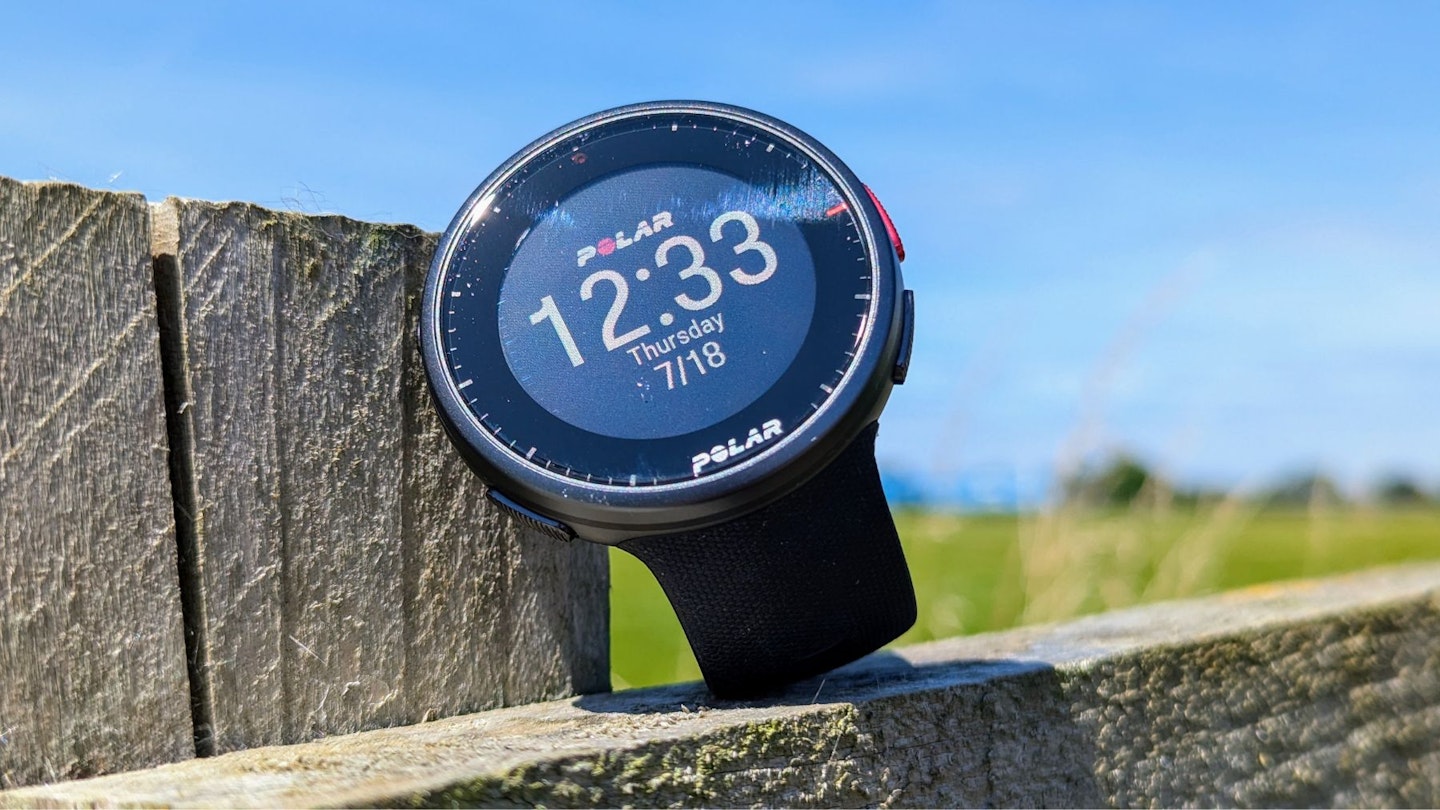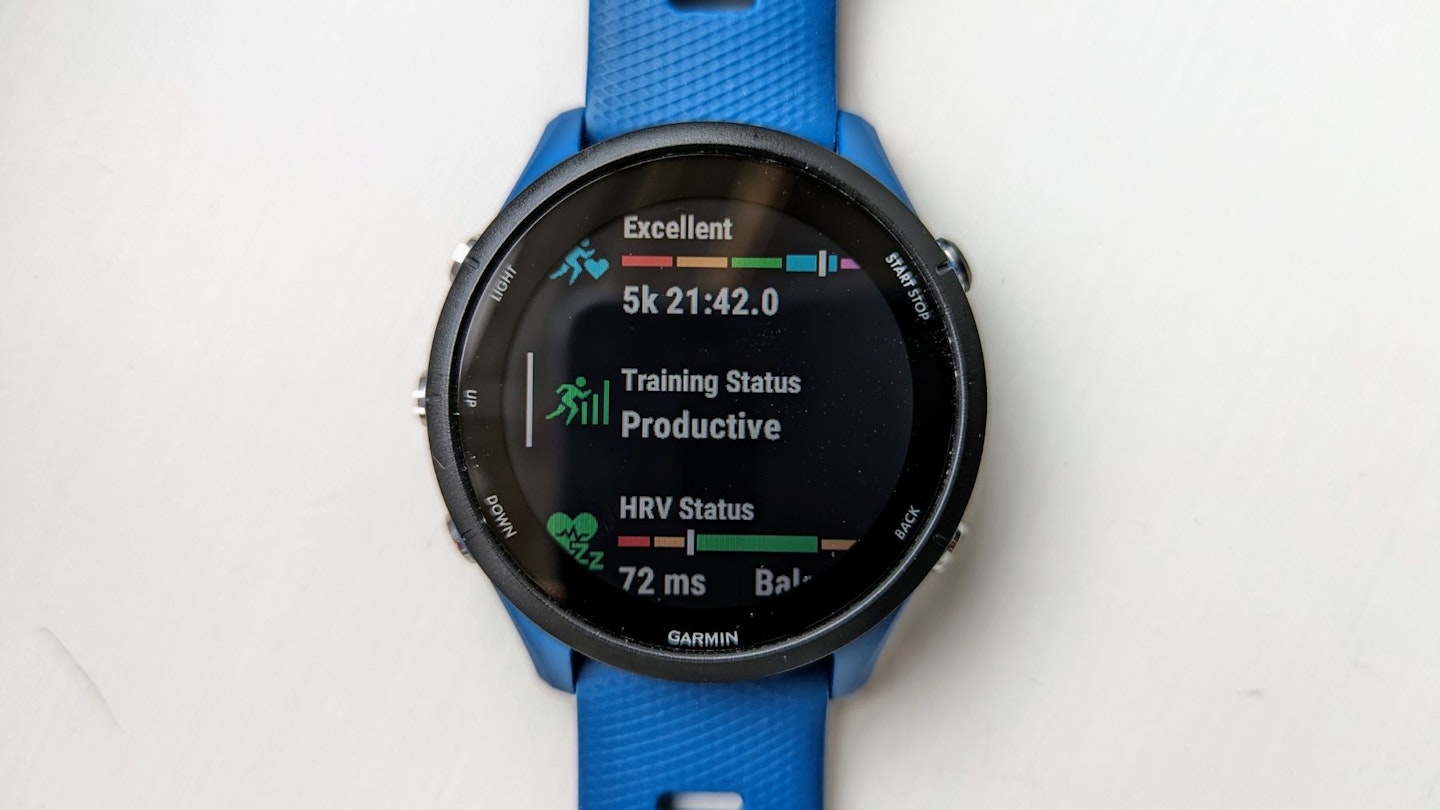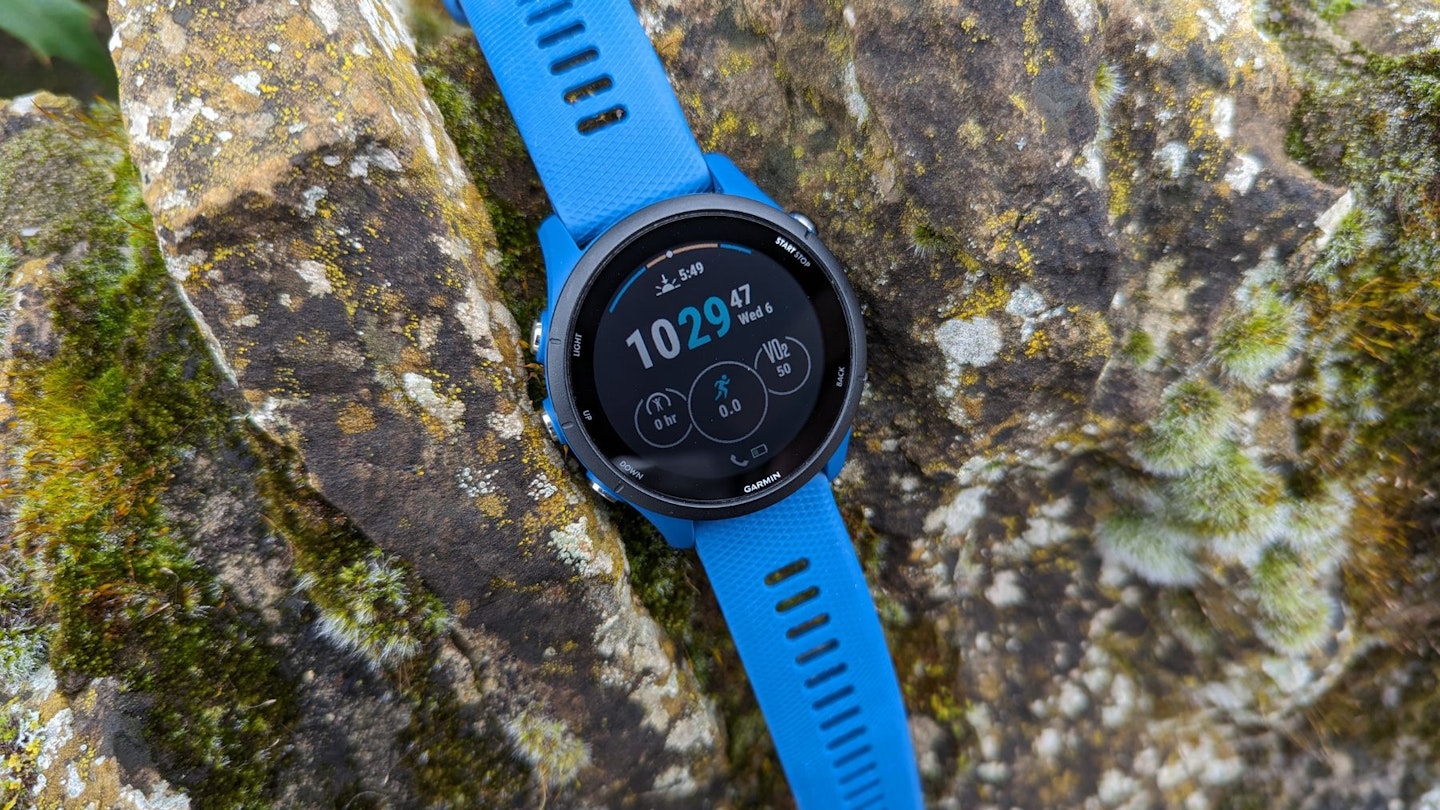The Polar Vantage range is Polar’s flagship series, made for high-performance sports and training. The V2 model has recently been replaced by the new Polar Vantage V3, and there is a legitimate question as to whether the Polar Vantage V2 is still worth it, having been released back in 2020.
The V2 itself was an updated version of the original Vantage V, and is more expensive than the Polar Pacer Series, including the Polar Pacer Pro, which is a mid-range device released two years later, in 2022. The Vantage V2 offers many of the same features, plus one or two extras.
After four years, it’s undeniable that the Polar Vantage V2 is no longer at the front of the pack in terms of features or performance. But the features that were on offer in 2020 are just as relevant now as they were then. Our Senior Tech Writer and Reviewer Steven Shaw knows plenty about fitness trackers and smartwatches. We gave him the Vantage V2 to see if it still manages to stand up to its competitors. Read on to see the results of his hands-on review.
 Polar
PolarPros
- Polar Flow app is detailed and insightful
- Lots of training and recovery metrics
- Accurate GPS tracking
Cons
- Touchscreen isn’t particularly bright or responsive
- Average battery life
- Limited smartwatch features
| Display | 1.2-inch, MIP (memory-in-pixel) display, 240 x 240 pixels |
| Battery Life | Up to six days |
| GPS | GPS, Glonass, Galileo, QZSS |
| Water Resistance | <span style="color: rgb(34, 34, 34); font-family: __Montserrat_1ec507, __Montserrat_Fallback_1ec507; font-size: medium; white-space-collapse: collapse; background-color: rgb(247, 247, 247);">WR100</span> |
| Compatibility | iOS and Android |
| Dimensions | 47 x 47 x 13 mm |
| Weight | 52 grams |
Comprehensive training toolkit (and recovery features)

Much like the Pacer Pro, the Polar Vantage V2 is unashamedly a training tool. It’s not a smartwatch, which means it has comparatively limited functionality compared to, say, an Apple Watch. While you can control music from your wrist, and receive notifications for apps and messages, you can’t make calls from your watch, open apps, or make contactless payments. But once you push that to the side, what’s left is a comprehensive set of tools for tracking your training and recovery.

Sleep tracking, heart rate monitoring, step count and calorie burn estimates are all present. There are also fitness tests, some to gauge your VO2 Max, and a leg recovery test to assess how you cope with lower body training, among others. The Vantage V2 can also suggest guided workouts to help you strike the right balance between strength training, cardio, and recovery. There are even animated stick figures to show you how to perform moves.
When it comes to tracking outdoor runs, this device has built-in GPS, a compass, turn-by-turn guidance, route guidance, and a Track Back function to lead you back the way you came – especially useful in unfamiliar surroundings.
I found the recovery tools the most insightful. They included Training Load Pro, which assesses how hard you are training, and whether you are at risk of overdoing it. Sleep tracking includes a Nightly Recharge score – like Garmin's Body Battery – to tell you how your sleep has supported your recovery (or not).
If this was 2020, I’d almost certainly be waxing lyrical about how comprehensive the feature set is. And it is still very respectable – similar in many ways to the (newer) Pacer Pro. But it is showing its age a little, and lacks a few features that newer devices offer as standard – temperature tracking, blood oxygen monitoring, and an ECG function, for example. It also doesn't have map support, unlike several newer devices including the Vantage V3. While I wouldn’t necessarily describe these as essential for everyone, they certainly fall into the ‘nice-to-have' category.
Polar Flow app

The Polar Flow app is where you’ll look at all that data your watch has collected. It presents the data clearly and will automatically load the current day’s data. Swipe from the left to view historic data, and tap on any metric to view it in more detail.
This, for me, was one of the biggest strengths of the Vantage V2. The Polar Flow app is extremely good overall. While I don’t like it quite as much as Garmin Connect, it was easy to use and navigate. I also appreciated the level of detail it went into to explain what different metrics were.
A minor criticism is that I had to do a fair amount of scrolling to see all the different metrics being measured. It’s a minor quibble, but I’d prefer more data to be visible at once. That said, when you tap onto any metric, you are given detailed insights into what has been recorded, and explanations of why it matters.
Slightly erratic performance

It’s reasonable to expect a flagship device to perform well. But this is one area where I felt that the Vantage V2 has fallen behind. Performance wasn’t dreadful. But, compared with the Garmin Forerunner 255, there were some inconsistencies that made it seem a less reliable device. This isn’t entirely surprising, as the 255 is two years newer.
On the positive side, GPS tracking was accurate. On my usual 5.5km test route, the Vantage V2 was always within 20m of the Garmin I was wearing on my other wrist. This makes the V2 fractionally less accurate than the (newer) Polar Pacer Pro, but accurate enough that I wouldn’t be concerned by its readings. Just as importantly, the readings were extremely consistent.
It was more erratic in terms of other metrics, however. During exercise, I found that it typically came within three beats per minute of the Garmin’s readings for maximum heart rate. But my average heart rate was usually considerably lower on the Polar device. It seemed to get less accurate the more intense the workout was.

It’s a similar story with step counts and calorie burn estimates. On most days, the Polar watch was within a few hundred steps of the Garmin, averaging a difference of less than 200. But on other days, there was a difference of as much as 5000 steps. Slightly strangely, even when the Polar believed I had taken more steps than the Garmin, it didn’t think I had covered as much ground. The difference was sometimes as much as five km between the two.
With calories, despite not travelling as far, and having a lower heart rate on the Vantage V2, it thought I burned far more calories than the Forerunner 255 did. The difference was variable: on some days, it was only 200 calories, while on others, it was as much as 700 calories more. That level of inconsistency is surprising and made it difficult to be confident in its accuracy.

When tracking sleep - which isn’t easy to do - the Vantage V2 once again tended to be more optimistic about the quality of my rest. It seemed to particularly struggle to spot when I was awake but lying still. While the watch seemed to be fairly consistent in terms of how it differed with the Garmin, it didn’t feel like it was closely reflecting my sleep. Which then begs the question of how accurate any recovery metrics – which largely rely on sleep data - would be.
Overall, performance was ok, but not great. It’s an area where the Vantage V2 has been overtaken by newer devices with more advanced sensors.
Average battery life
Battery life is acceptable. I got seven days use from it, which comfortably exceeds the single-day battery life of smartwatches such as the Google Pixel Watch 2, or any of the best Apple Watches. This was actually slightly longer than the six days Polar advertises.
But it still falls significantly short of other fitness orientated devices, like the Garmin Forerunner 255, which I typically charge once a fortnight. While it doesn’t come close to matching the best in its class, you still won’t need to worry about charging it every day.
Any downsides?
I’ve highlighted many of the excellent features that the Vantage V2 has. But as I mentioned earlier, it’s no longer a flagship watch, having been surpassed by many devices from several different brands in the years since it was released. It doesn’t suddenly make this a bad watch, but it is notable how many newer devices are offering features that this doesn’t have.
I mentioned a few before - body temperature tracking, blood oxygen monitoring, and an ECG function. But there’s also menstrual cycle tracking, maps, superior sensors, and many other technological advances that this watch doesn’t offer.
Dated design

Alongside the missing features, the watch design is no longer that of a flagship device. The memory-in-pixel display is, well, fine. But fine can’t compete with the outstandingly bright and clear AMOLED screens of the Vantage 3, or the Garmin Venu 3, for instance. There’s also the fact that the screen is quite small, surrounded by a thick bezel that makes this watch look quite dated. More modern devices tend to have thinner bezels, allowing for larger, easier to read screens without increasing the overall size of the watch.
Don’t get me wrong – the silicone strap is very comfortable, the aerospace aluminium case and bezel feel premium, and it’s water-resistant to 100 metres. The design of a watch doesn’t change all that much. But if you compare it to a newer model, the flaws are visible.
Price and competition
Were this watch still selling for its original RRP of £449, I’d struggle to call it good value. That would place it, in price terms, alongside much newer, more advanced models, and there is simply no competition.
However, the price has dropped considerably since 2020, and I have seen the Vantage V2 available for under £300. At that price, this device is starting to compete with watches such as the Garmin Forerunner 255 - itself a 2022 model – and one of the best Garmin watches.
Alternatively, there are true smartwatches that offer plenty of non-health and fitness features, including apps, contactless payments, and games, for example. Devices such as the Apple Watch SE or Google Pixel Watch 2 (depending on what phone you use) may appeal to more casual users who appreciate a more versatile piece of kit.
And of course, Polar itself has upgraded the Vantage V2 by introducing the Vantage V3, which offers plenty of new features, improved performance, and a considerably better AMOLED display. For serious sportspeople, they may feel it's worth paying more for. Alternatively, the Garmin Forerunner 265 is a similarly updated watch that will likely hit the sweet spot for most people in terms of price vs features.
Who is it for?

When it was launched, the Polar Vantage V2 was a premium product, aimed squarely at high-performance athletes. With an RRP of £439 at launch, this wasn’t designed for casual use, like the best fitness trackers, for example.
However, as time has passed the price has come down, and this watch has become more affordable. It's now much more accessible to casual health and fitness fans, who still want plenty of tools and metrics with which to gauge their progress.
If you’re an elite, or high-performing athlete who wants the best of everything, I wouldn’t say that this is the watch for you. You’ll most likely want something more advanced with new features. But if you want a watch that does a lot, and you don’t need the latest metrics, this may still be worth considering.
Would we recommend it?

It's a qualified yes. The watch is comfortable, has plenty of useful measurements to help monitor your health and fitness, and the Polar Flow app is very good. But the Vantage V2 is also four years old, and that complicates matters.
There are other, newer devices that offer more features than this watch, have upgraded, more accurate sensors, and larger, sharper screens. Of course, they will likely cost more, but that’s no more than I’d expect.
Ultimately, it will depend on what you want from a watch. If you want the most up-to-date, comprehensive feature set out there, then I wouldn’t recommend this device. However, if you can do without the latest features, and simply want a comfortable sports watch that tracks all the essentials, you may still appreciate the Vantage V2.
More items to consider
A mid-range running watch from Garmin, with plenty of excellent health and fitness tracking features.
The updated version of the Vantage V2, the Polar Vantage V3 has an improved AMOLED screen, and new features such as ECG and skin temperature readings.
4.
Coros Pace 3
 Coros
CorosA budget-friendly running watch designed to give runners loads of help and support. A newer watch at a lower price than the Vantage V2.
Who tested it?
Steven Shaw, a Senior Tech Writer and Reviewer at What’s The Best, reviewed the Polar Vantage V2. Steven loves putting a fitness tracker or smartwatch through its paces with a variety of workouts, before checking out the companion apps to see how the data is presented.
Steven has several years of working with and testing fitness trackers and smartwatches. He’s worked as a freelance writer and staff writer for numerous outlets, and can often be spotted wearing a watch on each wrist to compare devices.
How the product was tested
Steven wore the Polar Vantage V2 as his primary watch for a couple of weeks, testing it for comfort, and using it to track steps, sleep, exercise, and general day-to-day activity. On the other wrist Steven wore a Garmin Forerunner 255 to compare the data, as a way of testing for accuracy and consistency. All major metrics were tested extensively through a variety of exercise types, including, walking, running, yoga, strength training, and other cardio workouts.
Steven also tested the Polar Flow app on an Android smartphone, using it regularly to see how well data was synchronised, how clearly it was presented, and how easy it was to understand. He was able to compare the data with that collected by the Garmin Connect app.
Why should you trust us?
At What’s The Best, our mission is to provide accurate and reliable reviews, ensuring our readers receive honest and transparent information about the best technology products available. Anything less would undermine our commitment to being a trusted source of unbiased product information.
Our dedicated in-house writing team comprises experts with extensive experience and a genuine passion for technology. Collectively, we have spent decades testing and writing about tech, leveraging our expertise in all our articles, advice pieces and reviews.
We maintain complete editorial independence and do not accept payment for product reviews. Our writers have full control over their content, ensuring that products are selected based solely on the needs of our readers. While we may earn commissions or other compensation from links on our website, this never affects our product choices. These links enable us to continue offering valuable consumer advice, without compromising the integrity of our reviews.
How What’s The Best test products
At What's The Best, we ditch the gimmicks and deliver sweat-tested reviews for real fitness enthusiasts. Our team of experienced athletes puts the latest wearables and equipment through their paces in real-world workouts, from running trails to home gyms. We don't just read specs – we use products as they are intended and push our PBs, so you know what truly performs.
The result? Unbiased buying advice that gets you moving. We only review the most significant and relevant fitness tech and equipment on the market, saving you time and frustration. Can't find a review for your specific fitness goal? We're constantly adding new products to our ever-growing library, so stay tuned.
Ready to level up your workout with trusted advice? Visit our dedicated page on fitness tech and equipment reviews.
Steven Shaw is a Senior Tech Writer and Reviewer for What’s the Best. Steven writes how-to guides, explainers, reviews and best-of listicles covering a wide range of topics. He has several years of experience writing about fitness tech, mobile phones, and gaming.
When Steven isn’t writing, he’s probably testing a new smartwatch or fitness tracker, putting it through its paces with a variety of strength training, HIIT, or yoga. He also loves putting on a podcast and going for a long walk.
Subscribe to the What’s The Best Newsletterto keep up to date with more of the latest reviews and recommendations from the What’s The Best team.







